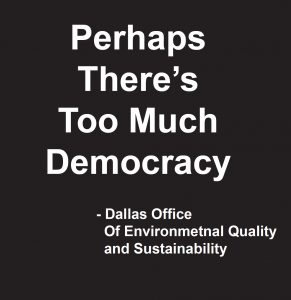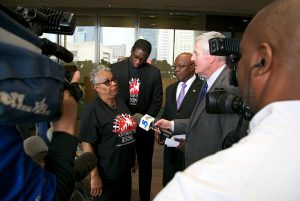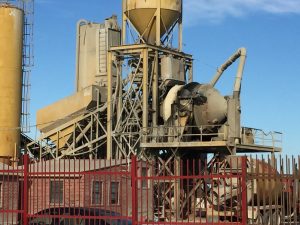Particulate Matter
“Build-A-Better Bus Stop” Design Contest Winner To be Decided This Saturday
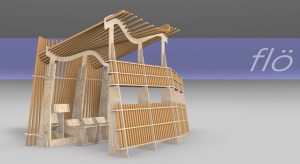
Better Bus Stop Design
Competition Finals
This Saturday May 4th
6 – 9 pm
Better Block Foundation HQ
700 West Davis
Look, Judge, Vote.
Downwinders at Risk is one of this year’s contest sponsors because it’s all about building a more people-friendly bus stop that’s also trying to minimize riders’ exposure to street level Particulate Matter pollution (PM.) Better Block was inspired to tackle this problem via its collaboration with Downwinders at Risk back in December on our Electric Glide Pub Crawl. This is a great example of how simply talking more about PM pollution can trigger a cascade of unintended beneficial effects.
Better Block gave 11 teams $250, four hours on their CNC router (basically, a giant printer for wood), and freedom to create whatever they want, as long as it’s a bus stop. Nine teams made 90 second videos on their designs you can see at the bottom of Better Block’s home page. They include a local couple, a Boston collective, Dallas’ own City Lab High School and UTA grads.
On Saturday those teams will actually build their prototypes at Better Block headquarters on West Davis. They’ll have judges determine a winner, but the public can also pick its favorite stop. Live Music and food trucks on site. Come and see the future while you wait for election returns.
Dallas Staff Attempts COG Coup on Air Monitoring Network
After being rebuffed by its own city council on the idea, Dallas Staff Goes to NCTCOG to promote autocratic regional air monitoring network
You may remember that way back last September members of the Dallas City Council Quality of Life Committee approved a independent regional air network as laid out in a 20 minute presentation by the University of Texas at Dallas’s Dr. David Lary and Downwinders’s Director Jim Schermbeck. They approved it 7-0 with even Rickey Callahan voting for it.
Usually when things get voted that favorably out of a Committee, they head straight to the full Council and get approved. But moments after the Committee vote City Staff demanded it not be sent to the full Council until December.
Everyone who knew the backstory of how much the Dallas Office of Environmental Quality and (Rockefeller) Sustainability hated the idea of such a network knew what was really going on. And sure enough, here it is April and there’s still no movement on the one regional network idea officially endorsed by a City Council Committee.
But guess what? Staff isn’t just standing still. No, they’re on the move. They’re not only going out of their way to shoot down the air monitoring network approved by members of their own the city council; they’re going out of their way to ignore the Dallas City Council all together and take their case for a more autocratic, less public network to the North Central Texas Council of Governments, or “COG.”
Not satisfied with allowing the worst environmental justice crisis since West Dallas to explode into Shingle Mountain during his watch, OEQ&(R)S’s James McQuire is now out to make sure Dallas residents never get a chance to make decisions about monitoring air quality in their own backyard.
Why? Because as one Dallas staffer put it, “too much participation by the public can be a bad thing.” McQuire and Company want a monitoring network staff can control without citizen participation or accountability, in other words the Status Quo. But of course the status quo has failed spectacularly to address both the region’s old, and new air pollution problems. UTD and Downwinders are proposing a model with heavy doses of public participation and representation.
So last month, McQuire submitted a request to COG to ignore what his own Dallas city council committee had endorsed, and instead start from scratch to build a less-democratic, more staff-driven network that would be run by the same agency that for years denied the Midlothian cement plants had any impact on DFW air quality. He did this OVER THE OBJECTIONS of Quality of Life Chair Sandy Greyson, who has a healthy skepticism of CO’s abilities to look out for Dallas’ interests.
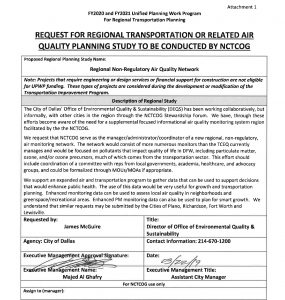 Like members of the Dallas Citizens Council who to make an end run around the City Council to get their own pet projects funded – see the VisitDallas headquarters slated for the new extension of Kyle Warren Park that is now being pimped by COG’s Director Michael Morris – McQuire is now circumventing his own Council and seeking relief from a “regional” agency that has historically only looked at air quality as an obstacle to highway funding.
Like members of the Dallas Citizens Council who to make an end run around the City Council to get their own pet projects funded – see the VisitDallas headquarters slated for the new extension of Kyle Warren Park that is now being pimped by COG’s Director Michael Morris – McQuire is now circumventing his own Council and seeking relief from a “regional” agency that has historically only looked at air quality as an obstacle to highway funding.
So let that soak in – Dallas city staff is intentionally ignoring its elected city council and the only air monitoring approach that council is on record as supporting, and instead now backing its own more autocratic version which has never been voted on by council and in fact was rejected out of hand by council members when asked.
It would take a novel’s worth of history to make the full case of why the COG is a poor choice for any new serious clean air effort in DFW but let’s start with just fundamentals.
COG has never cared about air quality from a public health perspective. Ever. Any work it’s done or is doing now – including promotion of electric vehicles and other anti-smog measures – are aimed at keeping DFW out of “non-attainment status” with the Clean Air Act in order to keep getting precious federal highway money. As long as the dollars keep flowing, COG isn’t interested in taking on other kinds of air pollution besides smog, or doing research into how even routine levels of combustion pollution are harmful, or until this moment, shown any interest in doing the air monitoring other metro areas are now routinely engaged in.
This skewed perspective is reflected in the language of McQuire’s proposal to COG. It’s all about how this air monitoring network could be a boon to transportation planning and oh by the way, maybe be of some public health interest too.
Because it lacks a public health perspective and is run by a cabal of local governments and staff by way of committees 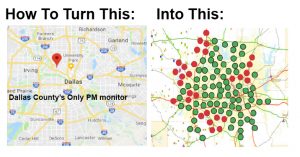 within committees, COG has been every bit as pro-active about bad air as the Dallas OEQ(R)S under McQuire, which is to say not a bit.
within committees, COG has been every bit as pro-active about bad air as the Dallas OEQ(R)S under McQuire, which is to say not a bit.
Downwinders spent years trying to convince COG leadership that three giant cement plants located in close proximity to each other in Midlothian, upwind of Dallas, and in eyesight of I-20 did in fact contribute to DFW smog. Despite spewing the equivalent of half a million cars worth of air pollution every year and being sited just across the Dallas and Tarrant county lines, the COG folks just didn’t get it – until Downwinders had to petition the EPA to bring those cement plants into DFW’s official smog plan itself. Those cement plants now have to be included in regional anti-smog plants but COG didn’t do that, citizens did.
When COG was writing its anti-smog plans, there were only two sides represented in it regional Clean Air Steering Committee: city staff and business. It took Downwinders to organize a collective boycott of this process until environmental groups were given seats at the table. COG didn’t do that, citizens did.
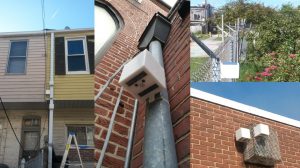 When fracking came to DFW, COG was as reluctant to point the finger at this huge source of new air pollution as it had been with the Midlothian cement plants. Why? Because local governments were benefactors of the Barnett Shale “boom” in tax revenues and drilling leases. COG steered clear from even acknowledging gas drilling as a significant air pollution problem and aligned with industry to dismiss concerns. It was up to local residents living next to drilling pads and compressor stations to write new rules for everything the drilling boom brought with it. Dallas residents wrote the most protective gas drilling rules in the state. COG didn’t do that, citizens did.
When fracking came to DFW, COG was as reluctant to point the finger at this huge source of new air pollution as it had been with the Midlothian cement plants. Why? Because local governments were benefactors of the Barnett Shale “boom” in tax revenues and drilling leases. COG steered clear from even acknowledging gas drilling as a significant air pollution problem and aligned with industry to dismiss concerns. It was up to local residents living next to drilling pads and compressor stations to write new rules for everything the drilling boom brought with it. Dallas residents wrote the most protective gas drilling rules in the state. COG didn’t do that, citizens did.
And if it had really been interested in air quality and air quality monitoring, the COG has had years to develop the idea and pursue it. It did not. Instead it was left up to non-profits like Downwinders and UTD to design and build a new approach to air monitoring. For over three years now this effort as been in the works and in fact James McQuire and his staff sat in on the meetings where the UTD model that was endorsed by his own council was drafted. He raised no objections at the time. Instead he waited until after the effort was finished and begin to sabotage it immediately from behind closed doors. Despite his best efforts at scuttling the proposal, the UTD model made it to Greyson’s committee and won a 7-0 vote. COG and Dallas OEQ(R)S didn’t do that. Citizens did.
And so now two of the region’s two most citizen-hostile entities are trying to team up and let COG do for Dallas air quality monitoring what it’s done to Dallas transportation policy – make it top heavy, unresponsive, undemocratic and staff controlled.
Like Greyson, Dallas County Commissioner Theresa Daniel is four-square against the COG idea and in favor of more public participation. Representing the largest local government entity involved, her opposition may keep McQuire’s effort from taking off despite his best bureaucratic efforts. And there’s also the May elections in Dallas to consider. A new council could have a lot more confidence in overriding staff proposals than the current one. And maybe that accounts for McQuire’s proposal arriving at COG now as well.
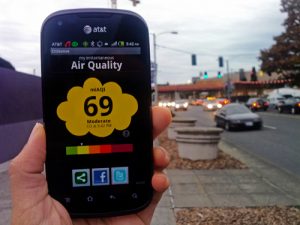
What really frustrating is that if McQuire and staff hadn’t begun his campaign to undermine the one approach that was favored by most of the entities involved, the Dallas city council would have already approved the UTD plan and we’d be on our way to building a truly independent monitoring network. Until Dallas staff objected last fall, there was a consensus about how to proceed. He’s single-handedly gutted that consensus, stifled all progress, and kept DFW way behind the air monitoring curve.
We’ll keep you up to date on how far this COG proposal gets, but Downwinders in Denton, Plano and Fort Worth should be on alert that McQuire is trying to get those cities on board with the COG approach as well. Please contact your most citizen-friendly council members and ask them not to support, what is in essence a staff coup in Dallas.
In the meantime, here’s one more question you can pose to Dallas council candidates this election season: “Do you support staff’s attempt to override the will of the council and impose a less public -friendly COG-run air monitoring network on Dallas, or the homegrown version proposed by UTD that’s already received a 7-0 vote?”
If this is going to get done right, citizens will have to do it.
Southern Sector Rising Went Eyeball to Eyeball with Dallas City Hall over Shingle Mountain. Dallas City Hall Blinked.
After a year of excuses, a determined group of women and their supporters shamed the City into finally taking action to close down the worst environmental health and justice crisis in Dallas.
When the collapse came, it came quickly.
Halfway through their Wednesday March 20th news conference giving authorities an ultimatum to shut down “Shingle Mountain” or face protests and possible civil disobedience, members of the freshly minted Southern Sector Rising Campaign for Environmental Justice learned the City of Dallas was reversing course and moving to close Blue Star’s year-old asphalt hell.
Only a week before, the official party line from City Hall was that the self-described “recycler” had all the permits it needed. Staff said critics’ description of Blue Star’s operation as an illegal dumping ground was wrong. It had “a right to be there.”
Now, on Wednesday….well, now circumstances had changed. The political circumstances that is.
Now there was a new coalition of frustrated Southern Dallas residents and Old School Icons like Peter Johnson, Luis Sepulveda and John Fullenwider staging an emotionally-charged news conference with chants of “Shame on Dallas” ringing loudly up and down the corridors of City Hall. Now there was a publicly-leaked report with incriminating evidence of official wrongdoing. Now there were swarms of cameras and reporters hanging on the every word of a middle-aged, middle-class, horse-loving DART employee who had been ignored for such a long time.
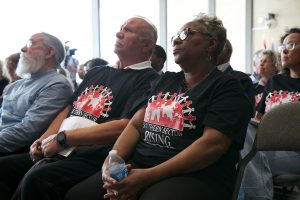
Three Generations of Dallas Environmental Justice Advocates: John Fullenwider, Luis Sepulveda and Marsha Jackson
Led by Marsha Jackson and her Choate Steet neighbors, Temeckia Durrough and Miriam Fields of the Joppa Freedman Town Association and Olinka Green from the Highland Hills Community Action Committee, with Stephanie Timko as media czarina, the Southern Sector Rising Campaign for Environmental Justice did more than just win a huge victory for an much-abused part of Dallas. It gave Southern Dallas residents a new model for effectively changing their circumstances.
An ad-hoc group that hadn’t even existed in February had the temerity to put City Hall on trial in its own lobby for Big D’s most spectacular municipal act of environmental racism in years. And it wasn’t even a fair fight.
An eye-opening state inspector’s report Downwinders sent to reporters a few days before the news conference officially documented permit violations and red flags too large to defend. Although Blue Star had promised the state in April 2018 it wouldn’t store more than 260 tons of waste at its site, it was already storing 60,000 tons in December. Blue Star was supposed to have a Fire Protection Plan. It didn’t. Blue Star was supposed to have adequate funds to close and clean up its site. It didn’t. Blue Star was supposed to randomly test incoming loads of shingles for asbestos. It didn’t.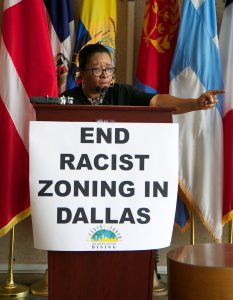
This is how bad it was: Blue Star’s mocking of the law was too much even for Gregg Abbott’s Texas Commission on Environmental Quality. Or the City of Dallas.
So long before the last speaker spoke in the Flag Room, news came that the City had pulled the Certificate of Occupancy for the largest of the two Blue Star tracts, something it had previously said wasn’t possible. Then it announced it was taking the company to court the next day to get an emergency Temporary Restraining Order to close Blue Star down.
That City staff could so shamelessly pull off such a dramatic flip flop over a matter of a few hours is testimony to both the fury fueling the Campaign, and the overwhelming evidence that Blue Star and its government enablers had allowed a full-blown illegal dump to grow… and grow…and grow. The only thing missing from the turnaround was an apology and acknowledgement to the women that had forced City Hall’s hand.
In Thursday’s hearing on the Restraining Order, the City of Dallas cited a number of missing municipal and state permits it now said Blue Star needed, including a Special Use Permit, an air quality permit, and a permit for storage in the flood plain – none of which the City had demanded when Blue Star had opened for business a year earlier. Despite the lack of these permits the City was now saying were essential, it had kept telling reporters, Council Members, and residents alike that Blue Star was a legal business right up until the time of the news conference.
It wasn’t. Ever. But it took a group of frustrated Southern Dallas residents to expose that lie.
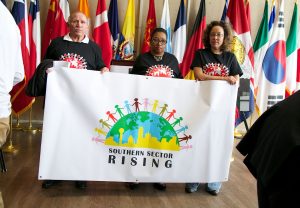 Of course in the hearing itself the heretofore lack of official city concern about these lacking permits was perturbing in the extreme for the attorney representing Blue Star, who said City Hall had already signed-off on its operations.
Of course in the hearing itself the heretofore lack of official city concern about these lacking permits was perturbing in the extreme for the attorney representing Blue Star, who said City Hall had already signed-off on its operations.
“The City told my client there were NO air quality problems,“ he protested to the judge. That was undoubtedly a true statement. But that conclusion was rendered before a brigade of angry residents showed up at City Hall demanding Dallas enforce the law.
Now, presto-chango, the City was emerging out of its dilapidated telephone booth with its moldy Toxic Avenger costume on and finding plenty of air quality problems, albeit in a anecdotal, non-quantifiable, way.
Because despite being “very concerned” about air pollution from Blue Star, the City of Dallas never monitored air quality from the facility before it got to court. Neither did the state. Only Downwinders at Risk, plugging-in one of our own portable PM monitors on the top of Marsha Jackson’s window unit for days at a time, captured any credible scientific evidence of air pollution harms.
Those results were released at the March 20th news conference and showed levels of Particulate Matter pollution that UNT’s Dr. Tate Barrett concluded “poses a significant health risk to the residents.”
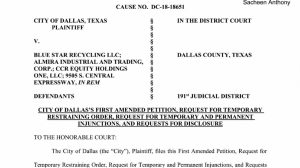
But in court, the City didn’t even mention those EPA-calibrated results.
For the first time in memory it was the regulators using only their senses to call for a crackdown – what they saw and heard and smelled at Blue Star’s site – and citizens showing up with Real Science.
Lacking any monitoring data of their own, Dallas city attorneys sounded like countless over-matched and overwhelmed residents from past TCEQ hearings, pleading with the judge to accept their word that the air pollution was so darn obvious…if not directly quantifiable because, well, no, we didn’t actually do any monitoring. We don’t know how to do that.
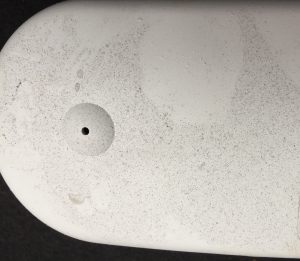
A layer of asphalt dust coated a Downwinders air quality monitor while it was recording levels of PM pollution at Marsha Jackson’s house in early March
This lack of any data to back up its air pollution claims was one of the most embarrassing parts of the hearing for the City. One wonders when James McQuire and his Office Of Environmental Quality & (Rockefeller) Sustainability’s stubborn refusal to buy its own air monitors will eventually cost the City (and its residents) in court.
But every time the City’s case looked in trouble, Blue Star’s attorney dug a deeper hole. He wanted the judge to know “shingles make really good fill” and that the spring-fed creek that ran through the company’s site was merely “a drainage ditch” and asking, after all judge, what is the true and right definition of “combustible” under Texas law?
Judge: “It means catch fire.”
Everyone but the Blue Star attorney chuckled.
After 45 minutes, Judge Gina Slaughter had heard enough and ruled in favor of the Restraining order. It took effect March 22nd and runs until Midnight on April 3rd.
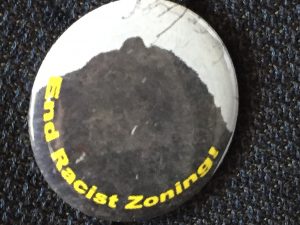 Before that happens, an 11 am Wednesday morning hearing will be held in the same courtroom to decide whether to extend the Temporary Order into a more permanent one. Word is that Blue Star was caught doing business during the last week when it wasn’t supposed to be on site at all. If true, it seems unlikely Blue Star will be granted a reprieve, despite the optimism displayed on the company’s website. “We fully expect to be open on Thursday April 4th, 2019″ it proclaims.
Before that happens, an 11 am Wednesday morning hearing will be held in the same courtroom to decide whether to extend the Temporary Order into a more permanent one. Word is that Blue Star was caught doing business during the last week when it wasn’t supposed to be on site at all. If true, it seems unlikely Blue Star will be granted a reprieve, despite the optimism displayed on the company’s website. “We fully expect to be open on Thursday April 4th, 2019″ it proclaims.
Not if Marsha Jackson, her friends in the Southern Sector Rising Campaign, and now their reluctant ally, The City of Dallas, get their way.
Take a 4 Minute Trip to “Shingle Mountain”
URGENT CALL TO ACTION FOR MARSHA JACKSON AND DALLAS’ SOUTHERN SECTOR
12 Noon, Wednesday March 20th
Dallas City Hall Flag Room 6th Floor
JOIN US FOR THE PUBLIC LAUNCH OF THE
SOUTHERN SECTOR RISING
CAMPAIGN FOR
ENVIRONMENTAL JUSTICE
Downwinders at Risk has joined with the the Joppa Freedman’s Association, Neighbors United/Vecino Unidos, the Highland Hills Community Action Committee, Sierra Club/BeyondCoal, Pax Christi Dallas, and other Dallas groups in initiating a campaign aimed at uniting residents who live along and south of the Trinity River, and their allies to say “enough is enough.”
The Southern Sector Rising Campaign for Environmental Justice seeks to end decades of racist zoning forcing industrial polluters into predominantly Black and Brown residential neighborhoods and more equitably distribute Dallas’ pollution burdens.
The Campaign’s First Target

SHINGLE MOUNTAIN
The most serious on-going environmental justice crisis in Dallas –
The Blue Star asphalt shingle sham recycling operation,
aka, “Shingle Mountain” aka “the Asphalt Alps.”
What makes this situation such a crisis?
Volume – thousands of tons of waste are accumulating with new loads arriving daily. The mountain is now4-5 stories tall.

Proximity – fine dust spewed and stored across the backyard fences of families with kids

Toxicity – Asphalt shingle waste is chock full of carcinogens
Help us apply more public pressure.
The Campaign’s First Action:

Public Launch @ DALLAS CITY HALL
WEDNESDAY MARCH 20th
12 NOON
FLAG ROOM 6th FLOOR
JOIN US AS WE PROPOSE A PRO-ACTIVE
DALLAS ENVIRONMENTAL JUSTICE AGENDA
1. The City of Dallas must immediately close the Blue Star Asphalt operation and begin to clean up the mess the company has created along the South Central corridor.
2. The City must include an equity provision in the City’s new Economic Development Policy prohibiting concentrations of polluters/pollution in the same neighborhoods.
3. The City must pass a moratorium on any new Industrial permits south of the Trinity River until that new industrial equity policy is in place.
4. The City must restore the City’s Environmental Health Commission to allow for a more resident-friendly process for hearing environmental nuisance and health problems.
5. The City must create a Joppa Environmental Preservation District prohibiting any new industrial permits in that historic Dallas Freedman’s community, phasing-out of existing industrial zoning there, and better protecting residents from pollution exposure.
March 20th’s launch at City Hall will begin with a video by local filmmaker Rick Baraff examining the personal toll Blue Star’s operations have had on the families who live around it. We’ll hear from Marsha Jackson, Biance Morales and members of her family as well as some very special guests.
It’s expected that at least one lawsuit, and maybe others, will be announced on March 20th on behalf of Ms. Jackson and the Morales’.
Campaign representatives will also be submitting language for specific ordinances the Dallas City Council to pass to implement the five campaign goals, announcing weekly pickets and a warning to the City that if Blue Star isn’t shut down by Earth Day, Monday April 22nd, we’ll be attempting to blockade new trucks of shingles from being dumped.
The Campaign’s First Protest

Picket Line at the front gate of Blue Star
12 noon to 2 pm, Saturday March 23rd
9527 S. CENTRAL EXPRESSWAY
VOTE WITH YOUR FEET TO HELP THIS NEIGHBORHOOD
IN ITS TIME OF CRISIS
This first protest at Blue Star will reflect Ms. Marsha Jackson’s deep ties to the Southern Dallas trail riding community. We’ll have a check-in tent with water, Rules of the Road and the latest information. We can supply some signs and help you create your own. The important thing is to show-up and support the effort to clean-up this horrible mess and the messes that decades of racist zoning have produced all over the Southern Sector.

Sorry Ms. Jackson: The City is Failing Southern Dallas
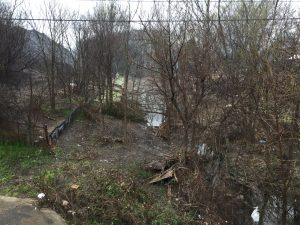
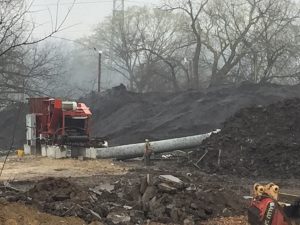
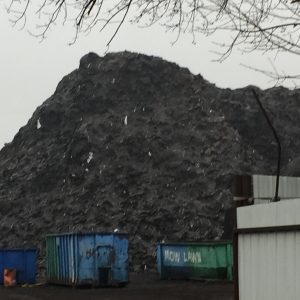
Marsha Jackson thought she’d found relief when Dallas Morning News columnist Robert Wilonsky wrote about the grotesque environmental disaster being caused by the Blue Star asphalt operation in mid-December..the first time.
After complaining almost a year to the City of Dallas, the State of Texas, and the EPA without any action taken, Ms Jackson saw Wilsonky’s column set-off a flurry of official concern about this inept and dangerous operation destroying acres of tree-covered Southern Dallas and Ms. Jackson’s home of 25 years.
That’ll happen when the city’s most read reporter informs you for the first time in passing about a situation it’s your job to already know about.
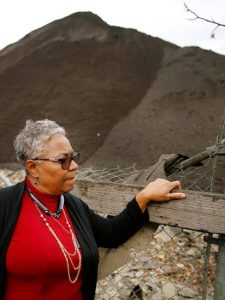 But that initial knee-jerk response left Blue Star still open for business, and without a clean-up. So Wilonsky wrote another column. Some more official action ensued. The City got a Temporary Restraining Order….that expired after a week. The authorities made Blue Star push their 4-5 story high mountains of used shingles back away from a small creek running through it’s property so the waterway would be better protected. Ms. Jackson? Not so much.
But that initial knee-jerk response left Blue Star still open for business, and without a clean-up. So Wilonsky wrote another column. Some more official action ensued. The City got a Temporary Restraining Order….that expired after a week. The authorities made Blue Star push their 4-5 story high mountains of used shingles back away from a small creek running through it’s property so the waterway would be better protected. Ms. Jackson? Not so much.
In fact, Blue Star has not been cited with even one nuisance, air pollution, or public health violation by the City of Dallas since it began building its special version of Hell a little more than a year ago. Officially, the city has shown zero concern for the human toll being taken by Blue Star’s pollution.
Last month Wilsosky wrote his third column stating what many of us feel when we see the operation in person: “This is insane.” He got Dallas City Manager T.C. Broadnax on the record saying Ms. Jackson’s plight was the result of bad zoning, the kind that allows polluters to only set-up shop south of Dallas’ historic dividing line Trinity River. But no action was taken to change that zoning and Blue Star keeps right on accepting truckloads of old shingles and keeps grinding them up in the open-air using the industrial equivalent of giant wood chippers, spewing fiberglass, plastic and maybe asbestos into Ms. Jackson’s property and neighborhood.
Blue Star keeps operating even though the City of Dallas says the business didn’t have a Certificate of Occupancy when they opened, despite evidence current city zoning doesn’t allow what they’re doing on the property they’re doing it on, and despite evidence they don’t have all the environmental paperwork they need for the despoiling taking place.
Despite his best efforts to do the job the City and State are supposed to be doing, Wilonsky’s words just haven’t been enough to stop the obscene environmental and public health problems being caused daily by Blue Star.
So maybe it’s time to do this ourselves.
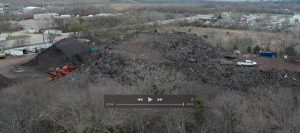
Maybe it’s time to file some lawsuits of our own, as citizens. There’s now plenty of documentation to prove the case of destruction, property rights takings, and personal and public health problems. Are there lawyers working in the public interest who could pursue these on behalf of Ms. Jackson and her neighbors? Yes there are. There are ones who can sue for regulatory relief and others who sue for “personal damages” caused by this kind of reckless disregard. These “toxic tort” attorneys would do well to target the deep pockets of the City of Dallas and the State of Texas as well as the modest holdings of Blue Star. Often the way to permanently put a stop to this kind of thing is to make the responsible parities pay such a high price that they’re never even tempted to try it again.
Maybe it’s time for us to begin amortization proceedings against Blue Star. This is the process that closed the RSR lead smelter in West Dallas in the 1980’s. A city can change the zoning for a piece of property to something that clearly does not allow the current activity to take place on that property. In order to be fair, the law allows the current users to operate until they get their investment in the property back and then they have to close-shop and move. Once you see the Blue Star property, you’ll understand that it’ll take about a day and a half for the company to get back its “investment.” In fact, because of all the violations of law and probable lawsuits, Blue Star is probably already close to being in the red.
Amortization proceedings can be initiated by the City Council OR citizens themselves. Here’s a description from the Dallas City Code using the City’s 15-member, council-appointed Board of Adjustments:
§ 51A-4.704. Nonconforming Uses And Structures.
The city council may request that the board of adjustment consider establishing a compliance date for a nonconforming use. In addition, any person who resides or owns real property in the city may request that the board consider establishing a compliance date for a nonconforming use. Upon receiving such a request, the board shall hold a public hearing to determine whether continued operation of the nonconforming use will have an adverse effect on nearby properties. If, based on the evidence presented at the public hearing, the board determines that continued operation of the use will have an adverse effect on nearby properties, it shall proceed to establish a compliance date for the nonconforming use; otherwise, it shall not.
Ms. Jackson owns her house. So maybe it’s time we help her petition the Board of Adjustments to begin kicking Blue Star out of Southern Dallas ourselves. If the Council wants to do its job and join in, that w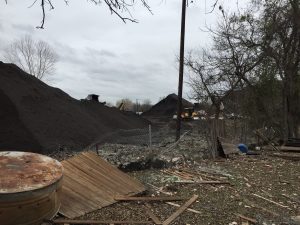 ould be great. But we don’t need them to start the ball rolling.
ould be great. But we don’t need them to start the ball rolling.
Maybe it’s time we protested. Not just on behalf of Ms. Jackson, but the ancient, racist underlying cause of this awful situation and so many more south of the Trinity River. Everyone who lives in the “Southern Sector” is a current or potential Marsha Jackson. We’ve got to begin to change the entire zoning map of the city to get rid of the kind of outrages even the City Manager acknowledges are a problem. We need to demonstrate not just against Blue Star, but for improvement across the board, for real progress on the City’s own Master Plan for South Central that aims to “de-industrialize” the area – not make it into a wasteland. We need a platform for progress that address the Southern Sector as a whole instead of continuing to play whack-a-polluter every few months at a different location.
Since August, T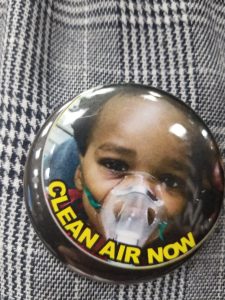 he Let Joppa Breathe Alliance has been meeting to try and draft such a platform as part of its mission. It’s been recruiting allies south and north of the river. It’s very near to making an announcement about that platform and the means it will begin to pursue it. This platform will be the first attempt to articulate specific City of Dallas environmental justice policy changes in the City’s history. It represents a tectonic shift in responding to age-old discrimination that’s still leaving a huge dusty coal-like legacy in Southern Dallas. We’re tired of playing defense. Its time we set the agenda.
he Let Joppa Breathe Alliance has been meeting to try and draft such a platform as part of its mission. It’s been recruiting allies south and north of the river. It’s very near to making an announcement about that platform and the means it will begin to pursue it. This platform will be the first attempt to articulate specific City of Dallas environmental justice policy changes in the City’s history. It represents a tectonic shift in responding to age-old discrimination that’s still leaving a huge dusty coal-like legacy in Southern Dallas. We’re tired of playing defense. Its time we set the agenda.
Dallas City Hall has failed Ms. Jackson and her neighbors. It’s failed Joppa. It’s failed Cadillac Heights, and Highland Hills and Fruitdale, and West Dallas. Over and over again. To win progress, something more must be done. When the call comes for that something more, how will you respond?
A New Round of PM Studies
Rising air pollution linked with increased ER visits for breathing problems
Air pollution could be as bad for pregnant women as smoking
Racial disparities in asthma related to health care access, environmental factors
High PM exposure nearly doubles dementia risk in older women
Air pollution is greatest environmental threat to global health in 2019, according to the World Health Organization
We Won! Dallas Plan Commission Votes 7-3 to Deny Approval of Bird Lane Batch Plant
It’s the 5th time in the last 13 months residents of
South and West Dallas have beaten back City staff attempts to put more polluters in their backyards
But this time they had to take on
their own Council Member and Plan Commissioner.
Channel 5 Coverage
City Hall Videotape Plan Comm. Mtg
(batch plant case begin about 20 minutes in)
In one of the most impressive recent displays of South Dallas neighborhood empowerment, residents won their fight last Thursday at the Plan Commission to keep yet another batch plant from setting-up shop among them.
But unlike past battles, they had to overcome their own Council member and his Plan Commissioner to do it.
Residents, as well as representatives from the Joppa Freedman Township Association, Paul Quinn College, the Inclusive Communities Project, and Downwinders at Risk all spoke out against the idea of transforming another piece of South Central Expressway property into a hub of heavy industry.
Leading the other side in support of the Bird Lane batch plant was of course the company proposing it, Estrada Concrete, and their consultants, but also District 8 Council Member Tennell Atkins’ Plan Commissioner, Chris Lewis. Bird Lane is in District 8.
Usually the support or opposition of the home district Council Member and Commissioner is key to the final tally, but in this case, the strength of the case against the plant was so solid, and Lewis’ plea to approve it so feeble, that a majority of his peers rejected his request. As these things go, it was a huge, humiliating smack down.
Lewis’ anti-citizen stance is more shocking once you know that only five days earlier he’d assured District 8 residents he’d be voting against the batch plant. Instead, the moment the last of the opposition speakers finished (there were no residents speaking in favor), he immediately made a motion to approve the batch plant.
Needless to say, that turn of events caught everyone opposing the plant off guard and provoked a rowdy backlash in the audience that built until the final vote was taken.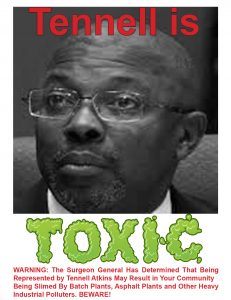
If it hadn’t been for District 11 (Kleinman) Commissioner Jaynie Schultz, District 3 (Narvaez) Commissioner Deborah Carpenter, District 5 (Callahan) Commissioner Tony Shidid, and District 1 (Griggs) Commissioner Jarred Davis raising objections, asking hard questions, and pointing to specific guiding language in the Dallas Planning Code, the vote would have gone against neighbors. In other words, there were at least four other Commissioners doing the work on behalf of District 8 residents that Mr. Lewis was appointed to do. Both Kevin Felder’s and Casey Thomas’s slots on this important body are currently MIA because they haven’t yet named replacements for their departed Commissioners.
That’s not a traditional liberal-conservative alliance that defeated the batch plant– you won’t find Scott Griggs and Rickey Callahan tossing back beers together. Nor is it a strictly black and white split. Of the two black Commissioners present, the only one voting for the batch plant was Mr. Lewis.
It was a neighborhood/Citizens Council split.
Not in any “big” issue, lots-of-phone-calls-before-the-vote kind of way. Rather, in a small, looking-out-my-own-backdoor kind of way.
Commissioners who opposed the batch plant couldn’t imagine looking out their own doors and seeing this thing as a neighbor. Those voting in favor knew such a fate was impossible for them.
Final proof is found in looking at who voted in favor of Lewis’ original motion to approve the batch plant. It included longtime Dist 15 (Rawlings) Commissioner Gloria Tarpley who’s distinguished herself in the past by voting for illegal gas drilling, and the Commissioners from Districts 13 (Gates), and District 10 (McGough).
As per usual, Dallas City staff had recommended approval of the Bird Street Batch plant, so residents really were fighting the entirely of City Hall – including the guy that’s supposed to be their full-time advocate at the place. And yet they persisted. And they won.
As it happens, the knock -out was a twofer. Not only did District 8 residents defeat the Bird Street batch plant, but they also learned that plans for Estrada’s other proposed batch plant around the corner on Zonie Road were being pulled as well.
Their victory – your victory too thanks to over 100 emails of opposition sent through our Citizen Action portal – was one event in a series of recent events that have given environmental justice issues in South Dallas some real traction of late. The first Joppa batch plant fight last March, announcement of the new Superfund site near Paul Quinn, discovery of Marsha Jackson’s “Asphalt Alps,” and other open wounds are beginning to provoke community self-defense responses.
Whether those responses can overcome South Dallas business as usual at the ballot box in May, or produce systematic change at City Hall, is a large and important question not only for South Dallas, but Dallas as a whole. We all live in neighborhoods. We all live downwind.
Build a Better Bus Stop Design Contest Another Step Toward Improving Public Health for Transit Riders
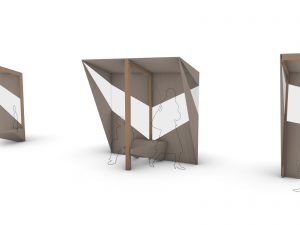 Inspired in part by its recent collaboration with Downwinders, Dallas-Based Better Block Foundation’s annual FD19 design competition is focusing on how to build a better, and more protective bus stop for transit riders
Inspired in part by its recent collaboration with Downwinders, Dallas-Based Better Block Foundation’s annual FD19 design competition is focusing on how to build a better, and more protective bus stop for transit riders
First orientation is January 16th, with milestones all the way up to the debut of the winning design in May. Better Block was founded a decade ago by Oak Cliff resident Jason Roberts. It “educates, equips, and empowers communities and their leaders to reshape and reactivate built environments to promote the growth of healthy and vibrant neighborhoods.”
Better Block recently helped out Downwinders during our Electric Glide Bus Pub Crawl by providing the spiffy portable stage used by Proterra founder Dale Hill at our stop at the Convention Center recharging station.
Originally both groups had more ambitious plans to design and build a number of pop-up bus shelters to test ideas on how better to protect waiting riders from street level Particulate Matter pollution and donate them to DART. DART had other ideas…and a long list of very particular specs to make the shelters official.
Despite this institutional resistance Better Block is determined to do some good and offer constructive suggestions. They requested and got DART’s long list of specs and are incorporating them into this year’s contest to DART won’t have any reason to reject them out of hand.
Despite these obstacles Better Block is determined to do some good and offer constructive suggestions. They requested and got DART’s long list of specs and are incorporating them into this year’s contest to DART won’t have any reason to reject them out of hand.
Why bus shelters? Studies show transit riders are among those most heavily exposed to PM pollution. One reason is they’re standing or sitting beside busy roadways, sometimes in shelters that actually trap PM pollution. Better Block wants to help design shelters that do actually reduce a waiting riders exposure to PM. 
Better Block Director Krista Nightengale explained “There are a couple things that led us to this: 1. Downwinders at Risk brought to our attention a recent study that showed that you could cut PM exposure by 30-40 percent by simply rethinking the bus stop So we want to think about how to reposition the bus stop to better protect people as they wait. 2. This is something we’ve seen/felt as we wait for the bus: many times, the stop is literally a pole in the ground. So how can we use what we do to give folks a place to sit and give them shade? And how can we make bus stops fun? “
Her comment and commitment are gratifying. It’s similar to what a DART board member told us after a discussion: “We never thought about PM before Downwinders brought it up.”
DART has never considered PM pollution in any of its decisions regarding bus type or bus shelter design.
Better Block’s decision to make better bus stops the center of their annual design competition is another small success story in Downwinders’ efforts to raise awareness about the dangers of PM pollution. We can’t wait to see the prototypes.
Plan Commission Zoning Vote for Bird Lane Batch Plant: Round 2
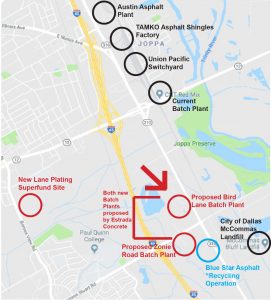
Dallas Plan Commission Hearing Scheduled
for Thursday January 17th, 1:30 pm
Dallas City Hall Rm 5ES
Speak Out Against
Systematic Environmental Racism
1) CLICK HERE TO SEND AN EMAIL TO
THE PLAN COMMISSION RIGHT NOW
Urge them to deny these permits…and consider a moratorium on ALL new industrial permits south
of the Trinity River “until the City can provide
a way to insure the same neighborhoods
are not always chosen to host them.”
2) SHOW-UP AT THE HEARING ON THE 17th
and speak against the zoning change
that Estrada Concrete is seeking.
Thanks in part to your emails, the Plan Commission delayed routine approval of the Bird Lane batch plant at its December 13th meeting and scheduled an individual hearing for Thursday, January 17th that could start as early as 1:30 pm at Dallas City Hall.
If you didn’t get a chance to send an email opposing the batch plant to the Plan Commission in December and want to do so you have that chance through our revised Featured Citizen Action “clickNsend” messaging. If you did send one in, send another.
This time, you can not only tell the Commission you oppose this specific permit…but ALL new industrial permits south of the Trinity River until the City of Dallas quits dumping all new polluters there.
We know the Bird Lane Batch Plant will be on the January Commission agenda but residents may be facing a twofer by then. The same company pursuing the Bird Lane site is also looking to put another new Batch Plant on Zonie Road right around the corner. After initially rejecting that effort because the paperwork wasn’t correct, it seems to be back on track up for Commission action as well – we just don’t know when yet.
All of this is just down the street from Blue Star Asphalt “Recycling” mess, aka Asphalt Mountain, current industry in Joppa, and close to the new Lane Plating Superfund site.
It seems certain that at the very least, the Plan Commission will decide on a Special Use Permit, or SUP, that Estrada Concrete needs to operate a concrete batch plant on the Bird Lane property for a minimum of three years..
Opposition is based both on the specific problems the batch plants would cause for neighbors, and the fact that this part of South Dallas already has a disproportional amount of polluting industries.

